Excel for Microsoft 365 Excel 19 Excel 16 Excel 13 When you use an array constant in an array formula, you can give it a name, and then you can reuse it easily Click Formulas > Define Name In the Name box, enter a name for your constant Program Microsoft Excel memungkinkan anda untuk memberikan nama untuk sebuah cell ataupun range name range) sehingga memudahkan anda untuk memanggil nilai yang terdapat pada cell tersebut atau berpindah dari satu cell ke lokasi cell lain yang sudah anda berikan nama range, fasilitas excel ini bernama Define name fungsi dari name manager selain untukName manager in excel are used to create a named ranges or edit it or delete, while working with formulas in excel we sometimes used names instead of giving cell references, if we want to add a new reference or edit any reference or delete it we can do it by the name manager, this is available in the Formulas tab under the defined names section
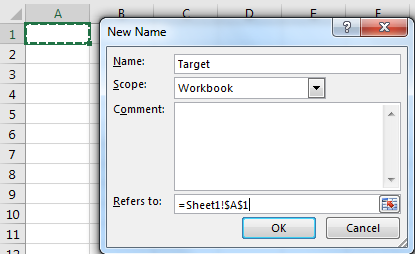
All About Excel Named Ranges Excel Range Name
Define name excel vba
Define name excel vba- Select the cells to which you want to assign the name Click the "Formulas" tab and then click "Define Name" in the "Defined Names" section NOTE You don't have to select the cells first You can also select them using the "Expand Dialog" button later on, if you want The "New Name" dialog box displaysWe can apply the Define name feature to name a range across multiple adjacent worksheets in Excel Please do as follows 1 Click Formulas > Define Name to open the New Name dialog box 2 In the New Name dialog box, please do as follows (1) Type a name for this named range in the Name box;
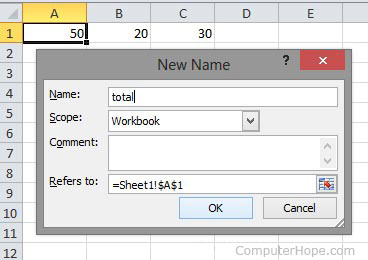



Define Names And Use Them In Microsoft Excel
To create a named cell in Microsoft Excel, select the cell and click the Name Box next to the formula bar, as shown in the image This bar has the current cell location printed in it For example, if you're in cell A1, it should currently say A1 in the Name Box In the Name Box, type the name you want to name the cell and press EnterFor example, I can name the Beds column by first selecting the data and then clicking Define name Excel will then open the New Name dialog box, where I can give the range a name, set the scope, provide a description and, finally, select the cells that the name should refer to 1 Select a range of cells in your spreadsheet (for example, in our sample, select B4B13) 2 From the Formulas tab, click Define Name 3 Notice that Excel
Excel has a useful feature Named Ranges You can name single cells or ranges of cells in Excel Instead of just using the cell link, eg =A1, you can refer to the cell (or range of cell) by using the name (eg =TaxRate) Excel also provides the "Name Manager" which gives you a list of defined names in your current workbookClick the Name And Values tab In the Y Values box, replace the cell reference with the defined name Sales For example, the formula might be similar to the following =Sheet1!Sales Click OK Method 2 Use a database, OFFSET, and defined names in Excel 03 and in earlier versions of ExcelHowever, if you want to assemble the reference as text, and have Excel treat the text as a reference, you need to use INDIRECT Note The single quotes are added in the formula above so that the formula will work when a sheet name contains spaces Author
Create a Defined Name We want to create a Defined Name on each of the destination sheets To do so, we just head to the first destination sheet and select cell A1 (or other cell if desired) Then, we enter our desired Defined Name (such as DataSheet) into the Name Box and press EnterDefinition of Name Box in Excel The box located to the left side of the formula bar which addresses the selected cell or group of cells in the spreadsheet is called Name box In the below screenshot highlighted with a red color box is the Name box Start Your Free Excel Course On the Formula tab, in the Defined Names group, click Define Name Or, press Ctrl F3 to open the Excel Name Manger, and click the New button Either way, the New Name dialogue box will open, where you specify the following details In the Name box, type the name for your dynamic range




How To Name A Cell Or Range In Excel 10 Dummies




Where Is Name Box In Microsoft Excel 07 10 13 16 19 And 365
In VBA to create name range we have Add Name Function We can select a cell or range of cells and give a name to it After naming the cells, we can refer to those cells by entering those defined names instead of a usual row or column references You can download this VBA Named Range Excel Template here – VBA Named Range Excel TemplateDefine names from a selected range Select the range you want to name, including the row or column labels Select Formulas > Create from Selection In the Create Names from Selection dialog box, designate the location that contains the labels by In the Defined Names section, click "Use In Formula" and select "Paste Names" from the dropdown menu You can also press "F3" NOTE If there are no named cell ranges in your workbook, the "Use In Formula" button is not available On the Paste Name dialog box, all the named cell ranges display in the Paste name list




Name Range In Excel Examples How To Use Names In Excel
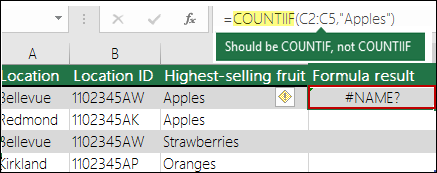



How To Correct A Name Error Office Support
This quickly shows you how to define a named range in Excel 10 using the name box and the Define Name option from the ribbon5 rows Define a name by using the New Name dialog box On the Formulas tab, in the Defined NamesHere are the steps to create Named Ranges in Excel using Define Name Select the range for which you want to create a Named Range in Excel Go to Formulas –> Define Name In the New Name dialogue box, type the Name you wish to assign to the selected data range



How To Define And Edit A Named Range In Excel




Excel Range Names What You Need To Know Fm
Select the Cell or Range you want to name Go to Insert>Name>Define to open the Define Name dialog box showing a list of all the names already defined in your workbook The Refers To box at the bottom will show the range selected in step 1 above Enter the name you wish to define in the blank box at the top and click the Add button The new Named Range will appear in the list The Defined Names feature in Excel makes your formulas and other data less confusing and easier to understand Instead of referencing a cell containing a value or a formula or a range of cells by the row and column headers (A1, B2, etc), you can use a defined name assigned to that cell or range of cellsUse the Name Manager dialog box to work with all the defined names and table names in a workbook For example, you may want to find names with errors, confirm the value and reference of a name, view or edit descriptive comments, or determine the scope




Creating Names From A Selection In Excel Excel Bytes




How To Define Use And Delete Names In Excel Formulas
Names in Excel In Excel, you can create names that refer to cells, or to a constant value, or a formula After you create Excel names, you can use them in formulas, or quickly go to a named range There are rules for Excel Names, and here's what Microsoft says is allowed It seems clear, but a few of the rules aren't as ironclad as they look Definition of Name Box in Excel The box located to the left side of the formula bar which addresses the selected cell or group of cells in the spreadsheet is called Name box In the below screenshot highlighted with a red color box is the Name box To begin, open workbook 12 using Microsoft Excel To define a range name in Excel, you first need to select the cell or range 2 Create a named range You can actually skip this step and create your dropdown list based on a range of cells, but named ranges really make managing Excel dropdown lists easier Select all the entries you want to include in the drop down list, rightclick them, and choose Define Name from the context menu Alternatively, you can click Name Manager on the
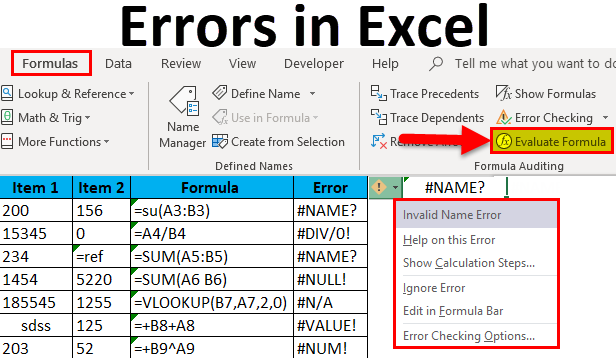



Errors In Excel Types Examples How To Correct Errors In Excel
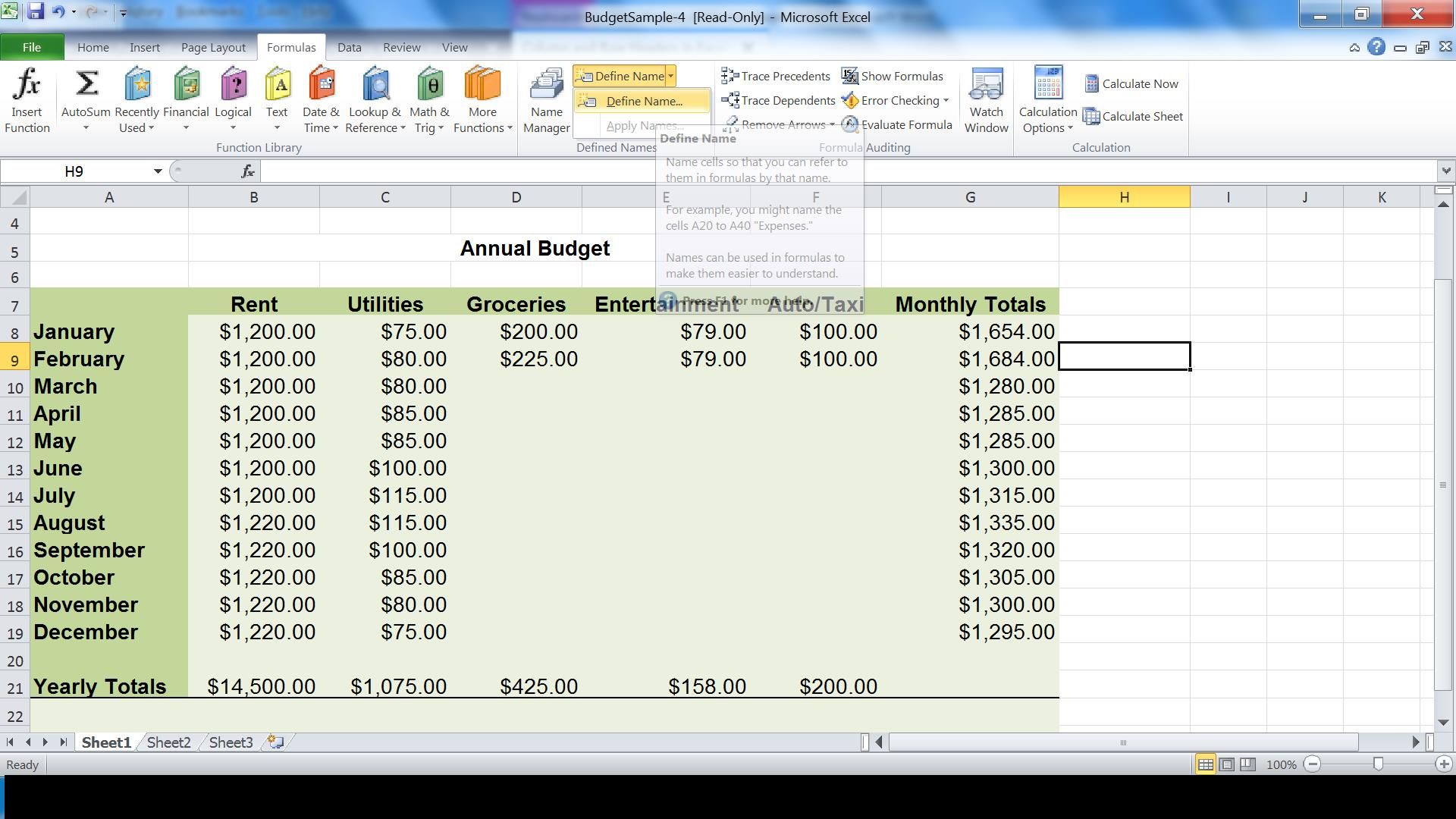



Excel Accessibility Screenreader Speaking Of Row And Column Headers In Excel Paths To Technology Perkins Elearning
On the Formula tab, in the Defined Names group, click Define Name Or, press Ctrl F3 to open the Excel Name Manger, and click the New button Either way, the New Name dialogue box will open, where you specify the following details In the Name box, type the name for your dynamic rangeIf you are using Excel 07 or later versions, the easiest way to create a dynamic How to use the OFFSET formula with a defined name To do this, follow these steps, as appropriate for the version of Excel that you are running Microsoft Office Excel 07, Microsoft Excel 10 and Microsoft Excel 13 In a new worksheet, enter the following data In VBA, I can successfully use an Excel defined name which refers to a cell For instance, if I define a name "ValueInA1", which refers to cell A1, the following VBA code will display the contents of cell A1 in a message box Variable1 = Range ("ValueInA1") MsgBox = Variable1 However if I create a defined name containing a constant or formula
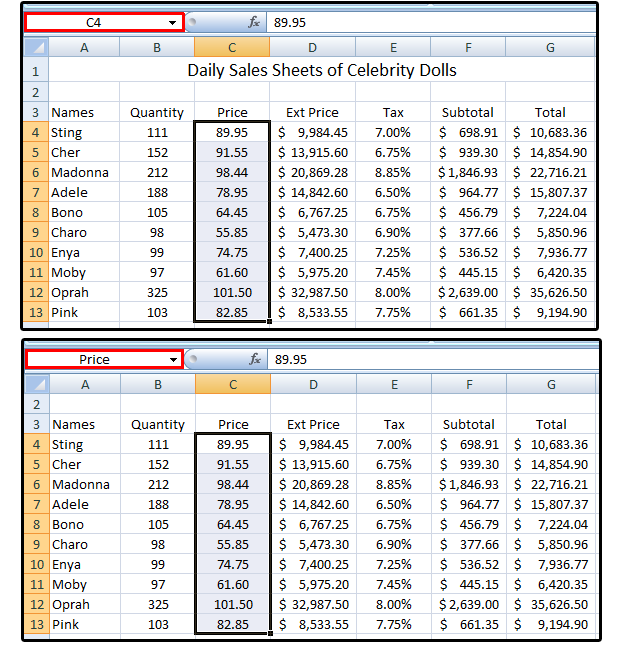



Excel Pro Tips How To Create Define And Use Named Ranges Pcworld




How To Use Name Manager In Excel Excel Tutorials
Range Names In Excel Another Step Further XL4 Macro Functions In Names It is not widely known that one can use XLM (no, not XML!) macro functions (these go way back to Excel version 4) in defined names This enables you to do things you normally can only do using VBA One important warning has to be made though Here's how Go to the Formulas tab > Defined Names group, click Name Manager Or, just press Ctrl F3 (my preferred way) In the top left hand corner of the Name Manager dialog window, click the New button This will open the New Name dialog box where you configure a name as demonstrated in theCreate defined names, edit and finally delete it By using names, you can make your formulas much easier to understand and maintain You can define a name fo




Best Excel Tutorial Define Name




Keep Track Of Names In Excel Workbook Contextures Blog
222 Excel shortcuts for Windows and Mac Windows shortcuts on the left, Mac shortcuts on the right See also 30 Excel Shortcuts in 12 minutes and Excel shortcuts on the Mac Download PDF Laminated card Video Training File Create new workbook Define nameA Yes, you can create a list of your Excel workbook's worksheet names as follows From the Formulas tab, select Defined Names, Define Name to launch the New Name dialog box pictured(2) Place the cursor into the Refers to box, next go




Creating A Chart Using A Dynamic Named Range In Excel 10 Super User




Microsoft Excel Create An Automated List Of Worksheet Names Journal Of Accountancy
MS Excel Name RangeWatch More Videos at https//wwwtutorialspointcom/videotutorials/indexhtmLecture By Mr Pavan Lalwani, Tutorials Point India PrivatThen run Formulas > Define Names > Apply Names Excel will then replace references that have a corresponding named range with the name itself You can also apply names with find and replace Important Save a backup of your worksheet, and select just the cells you want to change before using find and replace on formulasDefine names from a selected range Select the range you want to name, including the row or column labels Select Formulas > Create from Selection In the Create Names from Selection dialog box, designate the location that contains the labels by



1




Where Is Name Box In Microsoft Excel 07 10 13 16 19 And 365
Method #1 – Using Define Name Here are the steps to create Named Ranges in Excel using Define Name Select the range for which you want to create a Named Range in Excel Go to Formulas –> Define Name In the New Name dialogue box, type theNamed ranges are a powerful Excel feature that allows you to assign a symbolic name for the cell or the range of cells for later I have an Excel workbook with dozens of customnamed worksheets Is it possible to create a list of those worksheet names in Excel without having to retype them? rather the option to Define names in the first place is not there So previously when I've created a new name, I've gone to Insert>>Name>>Define, which brings up the Define names dialogue box However now the Define option is not there I can't see how to create a name range or manage them (which I've always done through this Define dialogue)




Excel Magic Trick 1139 Defined Names 1 Create From Selection 2 Apply Names Youtube




Excel Names And Named Ranges How To Define And Use In Formulas
Select the range you want to name, including the row or column labels Click Formulas > Create from Selection In the Create Names from Selection dialog box, select the checkbox (es) depending on the location of your row/column header If you have only a header row at the top of the table, then just select Top rowOn the Formulas tab, in the Defined Names group, click Define Name, and then click Define Name Enter a unique name For the Scope, select if you want the name to be available within the sheet only, or the entire workbook Enter an optional comment Click OKSelect the range E2H6 & press F5 key on the keyboard to open the Go to command Click on Special & select Blanks then click on ok This will select all the blank cells in the selected range Right click or press CTRL (dash) Select Shift cells up & then click ok You can check the correct name list using CTRL F3
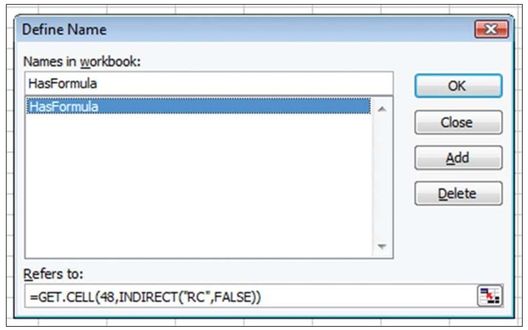



Use Get Cell To Highlight Non Formula Cells Excel Tips Mrexcel Publishing




Easily Assign An Excel Range Name Productivity Portfolio
In the Name Manager dialog box, you can create, edit and delete the named ranges as you want Please do as this 1Go to the Name Manager by clicking Formula > Name Manager, see screenshot 2In the Name Manager dialog, press Shift key to select all the named ranges or hold the Ctrl key to select the ones that you don't need, see screenshot 3And then click Delete With named ranges you need to use the Name Manager to figure this out Named range keyboard shortcuts You can bring up the Name Manager in Excel by pressing Ctrl F3 This lists the names used in your current workbook, and you can also define new names, edit existing names or delete names from the Name Manager Click on the "Formulas" tab on the Excel Ribbon at the top of the window Click "Define Name" button in the Formula tab In the "New Name" dialogue box, under the field "Scope" choose the specific worksheet that the range you want to define is located (ie "Sheet1") This makes the name specific to this worksheet
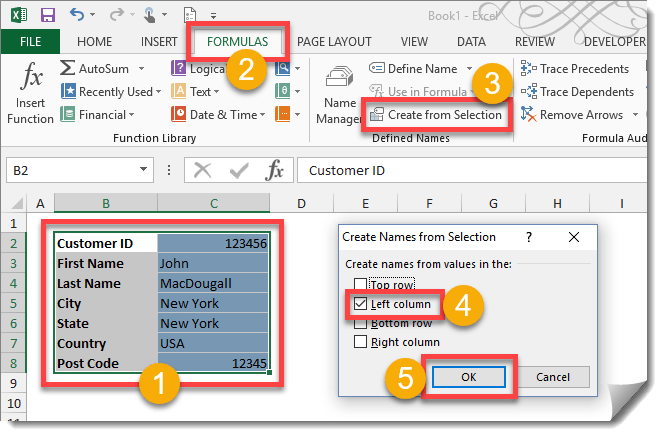



How To Create Multiple Defined Names Based On Labels In Other Cells How To Excel




Excel Named Range Exceljet
Excel Defined Name Microsoft Excel provides the capability to refer to a cell in a worksheet by the cell's row and column location, eg, A6, or if the cell is in another worksheet within a workbook by using the format 'worksheet_name'!cell_location Eg, suppose I have a workbook named Sales that has two worksheets for two salespersonsExcel Defined Name Excel Range Define Name Range in Excel(मेरे चैनल की सदस्यता के लिए यहां क्लिक करें) click here https Procedure Open up the spreadsheet in Excel Highlight the block of cells that will represent a single table in ArcView From the Insert menu, click Name, then click Define This will bring up a menu where the name of the block can be defined Type in the name to be assigned to the highlighted cells, then click OK




How To Define Named Range Across Worksheets In Excel
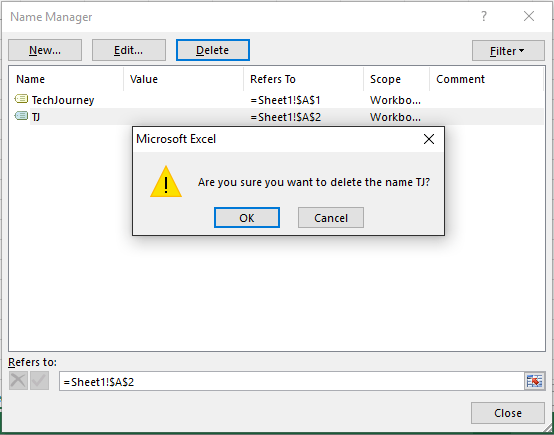



Delete A Defined Name Named Range In Excel Tech Journey
6 On the Formulas tab, in the Defined Names group, click Define Name 7 Enter a name, type a value, and click OK 8 Now you can use this named constant in your formulas If the tax rate changes, use the Name Manager to edit the value and Excel automatically updates all the formulas that use TaxRate 9




Using Named Ranges In Excel Formulas Dummies




How To Name A Cell Or Excel Data Area
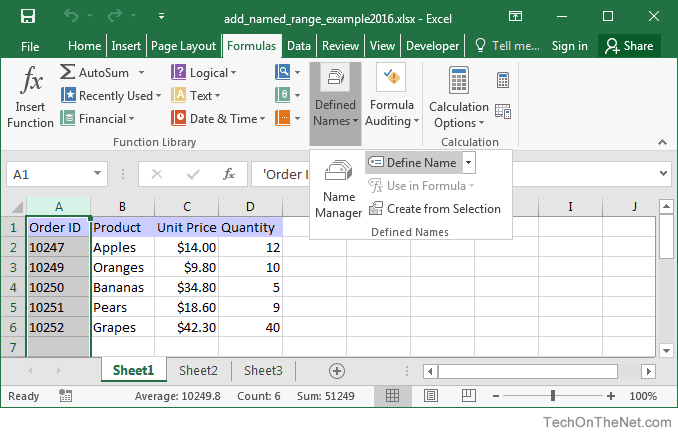



Ms Excel 16 Add A Named Range
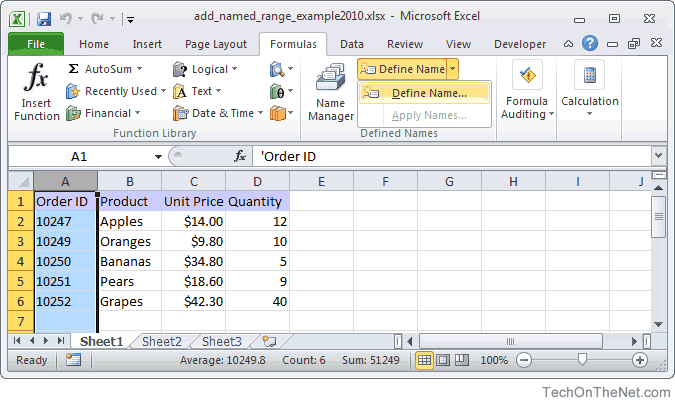



Ms Excel 10 Add A Named Range




How To Assign A Name To A Range Of Cells In Excel
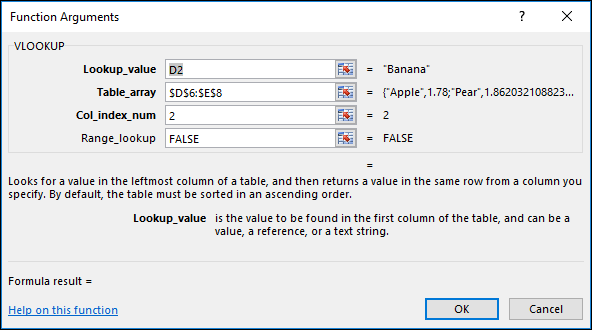



How To Correct A Name Error Office Support




How To Define Use And Delete Names In Excel Formulas
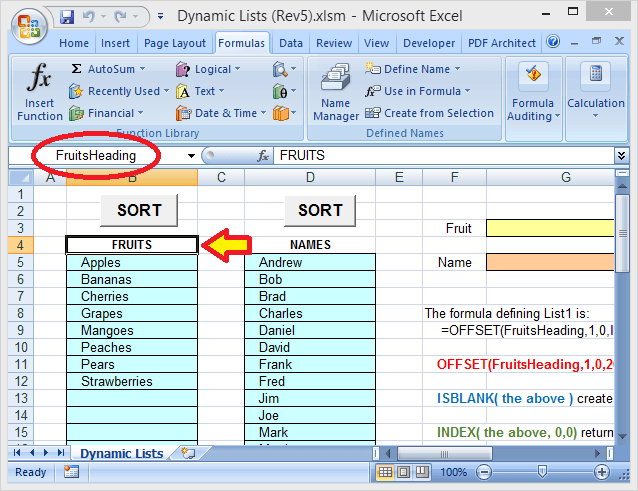



Use Dynamic Range Names In Excel For Flexible Dropdowns




Excel Names And Named Ranges How To Define And Use In Formulas




All About Excel Named Ranges Excel Range Name




Step By Step How To Use Named Ranges In Excel With Practice Workbook
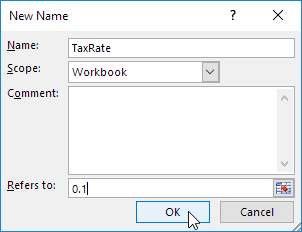



Create A Named Range In Excel Easy Excel Tutorial




How To Create And Use Excel Named Ranges



15a Name Of Cells Or Data In Excel




Use The Name Manager In Excel Excel



1



Will Power Bi Recognize Defined Names In Excel Data Awareness Programme




Naming Ranges Excel 11 For Mac Youtube




Excel Name Box Exceljet




Microsoft Excel Create An Automated List Of Worksheet Names Journal Of Accountancy



1




Excel Names And Named Ranges How To Define And Use In Formulas
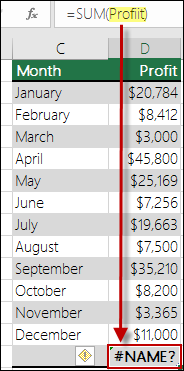



How To Correct A Name Error Office Support
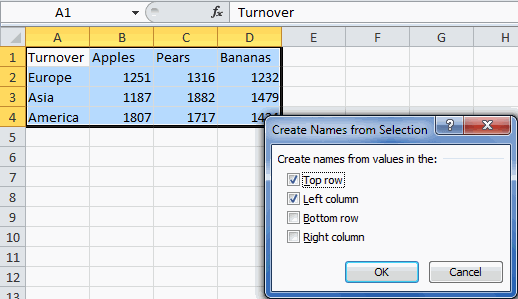



Excel Range Names In Excel Define




How To Define A Name For A Range Of Cells In Microsoft Excel




Applying Range Names To Formulas Microsoft Excel
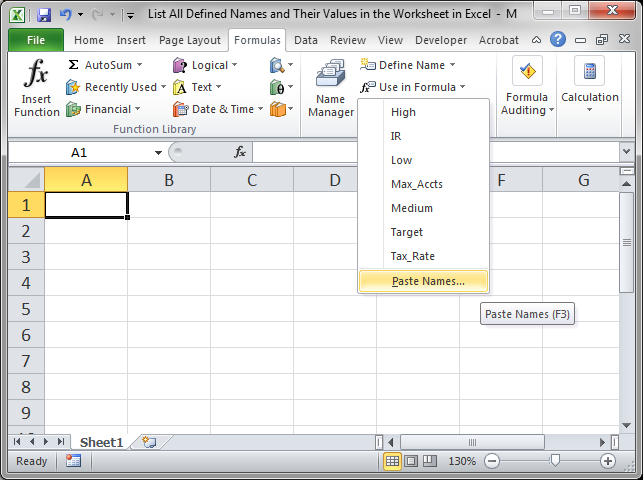



List All Defined Names And Values In The Worksheet In Excel Teachexcel Com
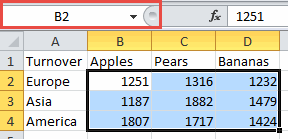



Excel Range Names In Excel Define
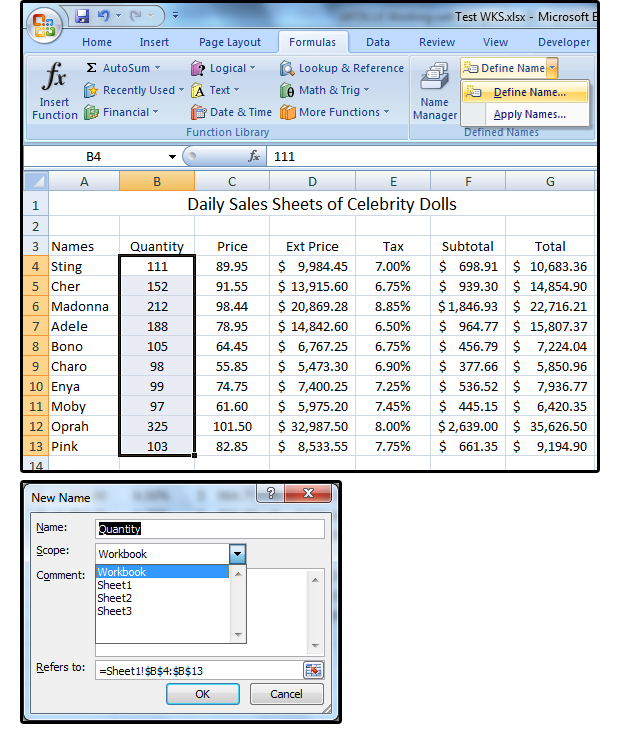



Excel Pro Tips How To Create Define And Use Named Ranges Pcworld




Name Manager In Excel How To Create Use Manage Names In Excel




Name Range In Excel Examples How To Use Names In Excel




Using The Same Range Name On Different Worksheets Microsoft Excel




All About Excel Named Ranges Excel Range Name
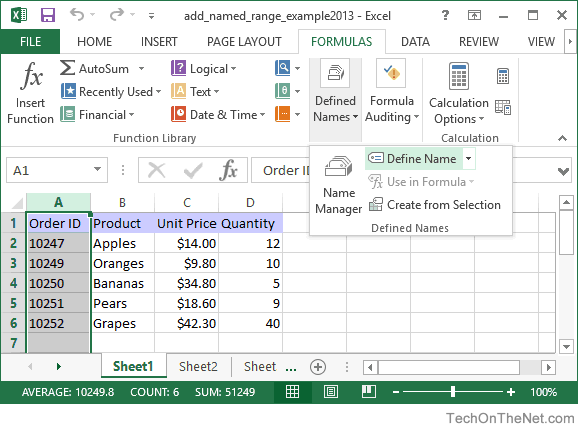



Ms Excel 13 Add A Named Range




Named Range In Excel Geeksforgeeks




How To Create Named Ranges In Excel A Step By Step Guide




Excel Names And Named Ranges How To Define And Use In Formulas




Name Range In Microsoft Excel Nurture Tech Academy




A Simple Shortcut To Define Name In Microsoft Excel 365




Naming A Cell Or Range In Excel With Formula Excelnumber




How To Delete All Named Ranges In Excel Free Excel Tutorial




The Untapped Power Of Named Ranges In Excel Ms Excel Excel In Excel




Excel Names And Named Ranges How To Define And Use In Formulas



Names And Formatted Formulas




Define Names And Use Them In Microsoft Excel




Named Range In Excel




How To Create Named Ranges In Excel A Step By Step Guide



Q Tbn And9gcsupxo2rqfhfzjwkqha5euf9 B51ipjesdakemreovmpachlj91 Usqp Cau




Creating And Using Named Ranges Microsoft Excel 03
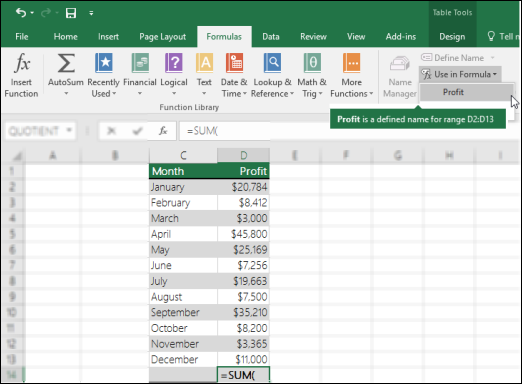



How To Correct A Name Error Office Support




How To Create Name Range In Excel Complete Guide 21




Where Is Name Manager In Excel For Mac The Excel Help System Microsoft Community



Will Power Bi Recognize Defined Names In Excel Data Awareness Programme



How To Define A Number In Microsoft Excel So That When This Number Is Written In Any Cell It Would Change The Number To Something Else I E Specified Name Quora




Excel For Architects Using Names To Manage Your Data Archsmarter
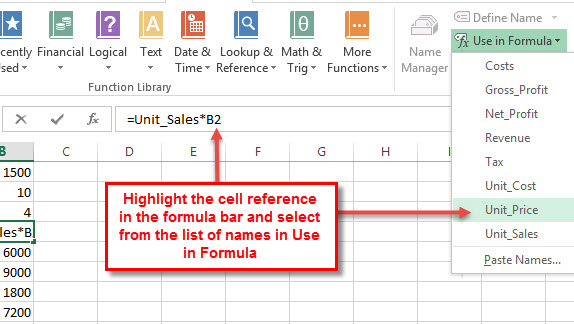



Using Cell Reference Names And Named Ranges In Microsoft Excel Pat Howe S Blog
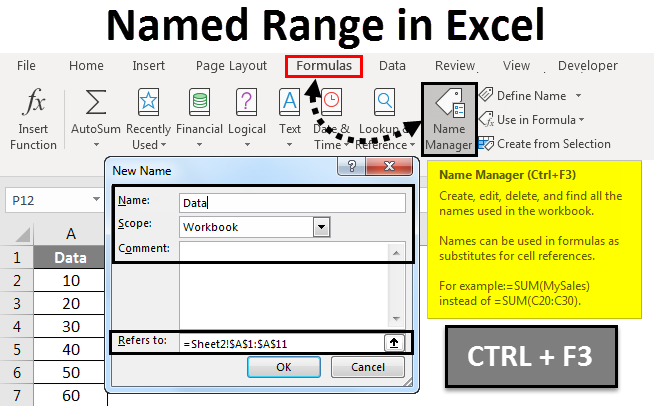



Named Range In Excel How To Create Named Range In Excel




How To See All Of The Named Cell Ranges In An Excel Workbook
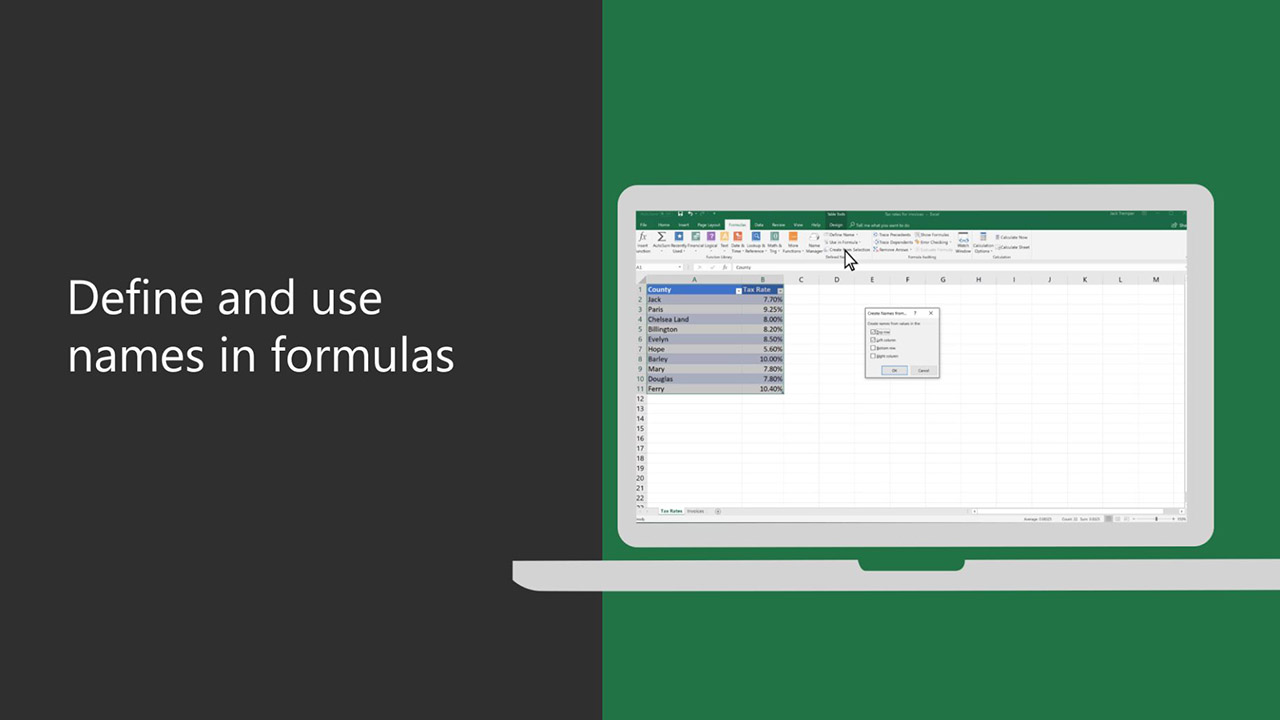



Define And Use Names In Formulas Office Support




Excel How To Define A Name To Source Data
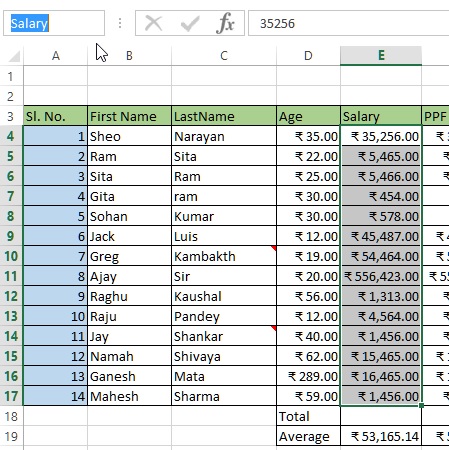



Named Range Named Constant In Excel Tech Funda
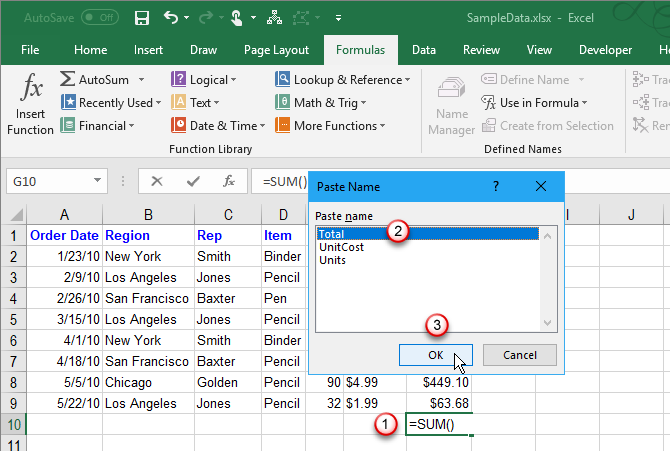



How To Work With Named Ranges In Microsoft Excel




How To Define And Use Names In Formulas With Excel 07 Youtube




Using Named Ranges Customisations Business Fitness Help Support




How To Apply Named Ranges To Existing Formulas In Excel
:max_bytes(150000):strip_icc()/NameBox-5be366ed46e0fb00519ef15a.jpg)



How To Define And Edit A Named Range In Excel




Naming A Cell Or Range In Excel With Formula Excelnumber




The Fastest Way To Create Defined Names In Excel Mp4 Youtube




Working With A Defined Name Excel First




How To See All Of The Named Cell Ranges In An Excel Workbook




A Simple Shortcut To Define Name In Microsoft Excel 365




How To Create And Use Excel Named Ranges




Create A Named Range In Excel Easy Excel Tutorial



Defined Names Group Of Formulas Tab Ribbon Microsoft Excel 16 Indiaexcel Learn Microsoft Excel



Excel Dynamic Charts Using Names Series And Offset Missing Out Unwanted Zero Values On Line Charts
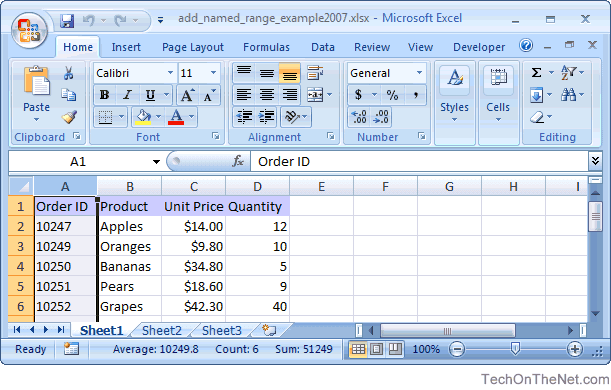



Ms Excel 07 Add A Named Range



Defined Names 101 Creating And Managing The Excel Codex




5 Ways To Create An Excel Named Range



0 件のコメント:
コメントを投稿